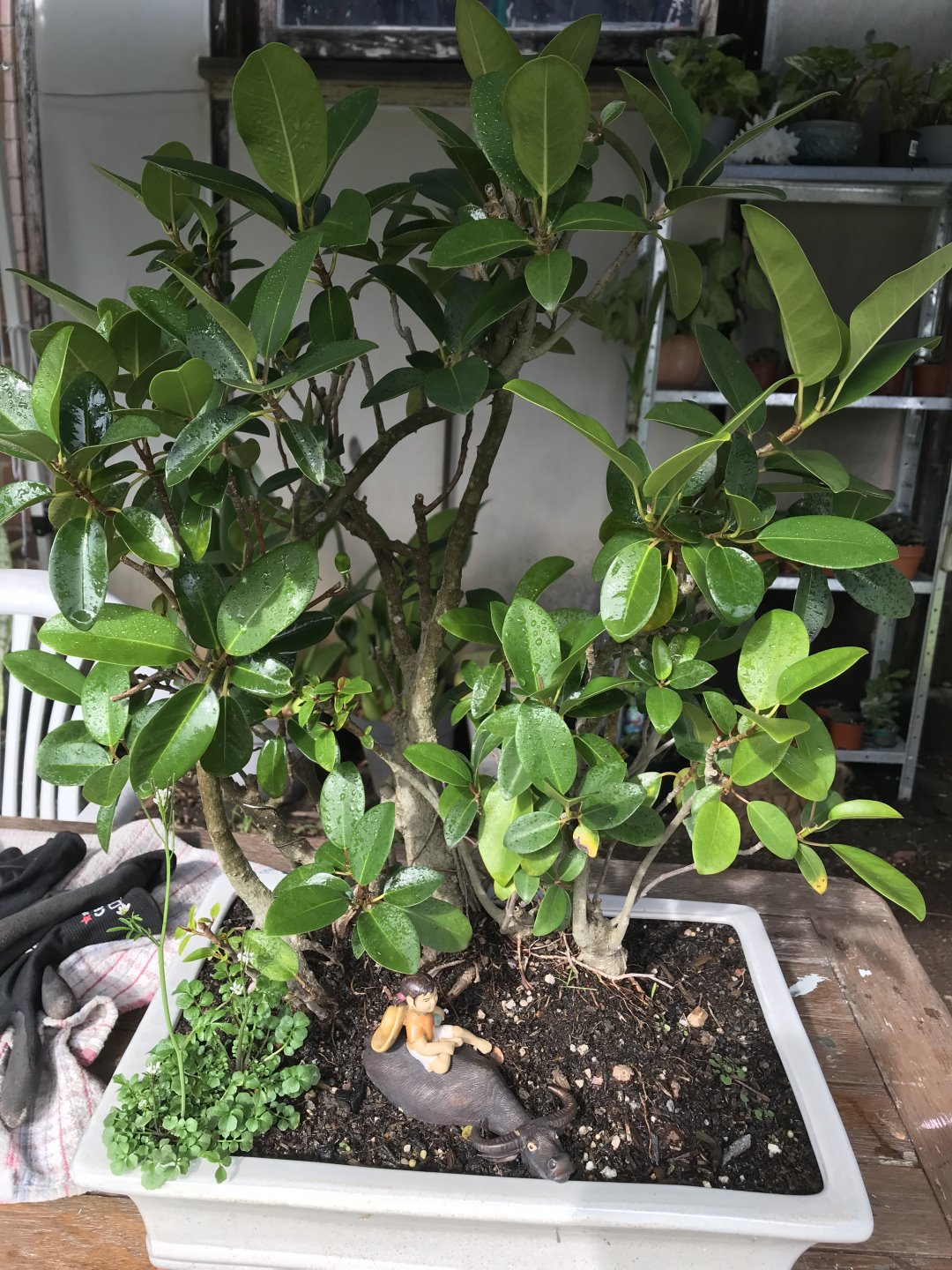Bonsai Plants & Trees
Caring for bonsai plants & trees is a delightful and artistic pursuit.
These miniature trees, when nurtured with care, become exquisite companions that endure for generations. However, this takes time for both you and the plants to develop.
Fear not, aspiring bonsai enthusiasts! This comprehensive guide will illuminate every aspect of bonsai care, from selecting your tree to establishing a nurturing routine.

Why Bonsai Gardening Captivates the Heart
Miniature Giants
Bonsai trees are like living sculptures. Their small size allows us to appreciate the intricate details of nature up close. The delicate leaves, twisted branches, and tiny blossoms evoke wonder and awe.
Patience and Persistence
Bonsai gardening teaches us patience. As we nurture these little trees, we witness slow growth, seasonal changes, and the passage of time. It’s a reminder that beauty unfolds gradually, just like life itself.
Connection to Nature
Tending to bonsai connects us to the natural world. We learn about soil, sunlight, and water—the essential elements for growth. Bonsai becomes a bridge between our urban lives and the ancient rhythms of trees.
Artistic Expression
Shaping a bonsai is an art form. Pruning, wiring, and styling allow us to express our creativity. Each tree becomes a canvas, reflecting our vision and skill. It’s a therapeutic outlet for self-expression.
Zen and Mindfulness
Bonsai demands focus. When we trim a branch or repot the tree, we enter a meditative state. The quiet moments spent with our bonsai bring clarity, grounding us in the present.
Legacy and Continuity
Bonsai trees can outlive their caretakers. Passing down a well-cared-for bonsai to the next generation creates a sense of continuity or a living legacy that transcends time.
Bonsai gardening isn’t just about plants as it’s about cultivating a deeper connection to nature, to ourselves, and to the art of living.
What Is a Bonsai Tree?
The History of Bonsai
The word “bonsai” has a pretty easy-to-understand meaning as it means “planted in containers” in Japanese.
The practice of cultivating trees into miniature landscapes, however, originated in China over 2,300 years ago as an art form called “pun-jai.”
Over time, Zen Buddhists in Japan adopted bonsai as a meditative process that puts the caretaker in harmony with nature. Today, in English, bonsai is used to describe all manners of small trees in shallow containers.
The Science of Bonsai
Bonsai is not a specific type of tree but a specific understanding of growing plants. Almost any type of tree will “bonsai” if it is grown correctly.
This growth plan is to limit root growth and pruning branches so leaves stay small eventually you can create a miniature version of the same plant. They can live just as long as its life-sized counterparts!
Getting Started
Selecting Your Bonsai Tree
When embarking on your bonsai adventure, you have two paths to choose from. Some beginners opt to purchase an established tree from a nursery, while others find joy in cultivating their own from a sapling.
Patience is key here—growing a bonsai from scratch can take up to five years. If you’re unsure where to find your very first bonsai, consider reading our comprehensive guide on How to Buy a Bonsai Tree.
Beginner-Friendly Bonsai Varieties
For those who haven’t yet earned their green thumbs, selecting a less finicky bonsai variety is a wise move.
Ficus
Azalea
Fig Trees
Conifers
Chinese Elm
Jade
Essential Tools
While patience remains your greatest asset, a few tools can enhance your bonsai journey:
Pruning Shears – Use these for precise cuts on delicate shoots and twigs.
Concave Cutters: Ideal for trimming larger branches flush with the trunk during structural pruning.
Root Rake – Essential for repotting, weeding, and loosening compacted soil around the roots.
Training Wire – Shape your tree’s new growth direction.
Choosing the Right Container
If your bonsai comes from a nursery, it already has a home.
Depth – Opt for a pot as tall as your tree’s trunk is wide.
Width – Choose a container about one-third the tree’s height.
Conclusion
In the quiet corners of our lives, bonsai plants & trees thrive. They teach us patience, resilience, and the art of mindful care. As we prune their branches and shape their forms, we find solace—a refuge from the chaos of the world.
Remember, bonsai isn’t merely about horticulture; it’s a journey of the heart. Each leaf whispers ancient secrets, and every twist in the trunk tells a story. So, as you tend to your miniature forest, let your soul wander among the delicate leaves and gnarled roots.
Join the Discussion
We’d love to hear from fellow bonsai enthusiasts! Whether you’re a seasoned caretaker or just starting out, feel free to contribute your thoughts, experiences, and tips.
Your Favorite Bonsai Plants & Species – Which bonsai tree stole your heart or any of your favourites?
Memorable Moments – Have you ever nursed a struggling bonsai back to health? Or witnessed a surprising growth spurt? Tell us your bonsai stories!
Creative Styling – Bonsai artistry knows no bounds. How do you express your creativity? Do you follow traditional styles or invent your own?
Zen Practices – Bonsai and mindfulness go hand in hand. Share your meditation rituals while tending to your tiny forest.
Challenges and Triumphs – Every bonsai journey has its highs and lows. What obstacles have you overcome? What victories have you celebrated?
Feel free to comment below and connect with fellow bonsai lovers. Let’s nurture our passion together!












One thought on “Easy Guide To No.1 Bonsai Plants & Trees”